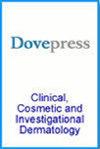The Prevalence and Awareness of Regular Follow Up of Patients Treated with Phototherapy for Skin Cancer Surveillance
IF 2.2
4区 医学
Q3 DERMATOLOGY
引用次数: 0
Abstract
Objective (Background): Regular full-body skin examination is commonly ignored in patients post-phototherapy, despite ultraviolet (UV) radiation being carcinogenic. Our objectives are to assess the prevalence of regular follow-up and full-body skin examination for patients treated with phototherapy, as well as the relationship between phototherapy exposure and the development of skin cancer in Saudi Arabia.Methods (Settings, Design): This was a cross-sectional retrospective study conducted from January 2022 to July 2022. The study included 99 patients, selected via simple random sampling, from King Saud University Medical City, Riyadh, Saudi Arabia, who underwent phototherapy for at least 8 weeks and were followed for a minimum of 18 months post-treatment. Patients who met the inclusion criteria were called and given a questionnaire.
Results: Out of 99 patients, only 26 (26.26%) underwent full-body skin examinations by their physicians after phototherapy treatment. The average follow-up time after phototherapy was 3.2 years. Most study participants (85.85%) were unaware that cancer was a possible complication of phototherapy. Participants with knowledge about skin cancer complications were more likely to have undergone a full-body exam (P = 0.001). None of the participants developed any type of skin cancer after phototherapy.
Conclusion: Patients treated with phototherapy had no adequate information about the risk of skin cancer. The incidence of skin cancer was zero in our small cohort. Dermatologists in Saudi Arabia do not have an evidence-based notion regarding the risk of skin cancer among the Arab population after phototherapy. Since There is a lack of data examining the relationship between phototherapy and skin cancer in the Arab region, this study should trigger future studies with large populations and longer follow up periods.
Keywords: phototherapy, skin cancer, skin examination
为监测皮肤癌而对接受光疗的患者进行定期随访的普遍程度和意识
目标(背景):尽管紫外线(UV)辐射具有致癌性,但光疗后患者通常会忽视定期的全身皮肤检查。我们的目标是评估沙特阿拉伯接受光疗的患者接受定期随访和全身皮肤检查的比例,以及光疗暴露与皮肤癌发病之间的关系:这是一项横断面回顾性研究,研究时间为 2022 年 1 月至 2022 年 7 月。研究纳入了沙特阿拉伯利雅得沙特国王大学医疗城通过简单随机抽样选出的 99 名患者,这些患者接受了至少 8 周的光疗,并在治疗后接受了至少 18 个月的随访。符合纳入标准的患者会被召集并获得一份调查问卷:在 99 名患者中,只有 26 人(26.26%)在光疗后接受了医生的全身皮肤检查。光疗后的平均随访时间为 3.2 年。大多数研究参与者(85.85%)不知道光疗可能会引发癌症。了解皮肤癌并发症的参与者更有可能接受过全身检查(P = 0.001)。结论:接受光疗的患者没有充分了解皮肤癌的并发症:结论:接受光疗的患者没有充分了解皮肤癌的风险。在我们的小群体中,皮肤癌的发病率为零。沙特阿拉伯的皮肤科医生对光疗后阿拉伯人患皮肤癌的风险没有循证概念。由于在阿拉伯地区缺乏研究光疗与皮肤癌之间关系的数据,因此本研究应引发未来对大量人群和更长跟踪期的研究。
本文章由计算机程序翻译,如有差异,请以英文原文为准。
求助全文
约1分钟内获得全文
求助全文
来源期刊

Clinical, Cosmetic and Investigational Dermatology
Medicine-Dermatology
CiteScore
2.80
自引率
4.30%
发文量
353
审稿时长
16 weeks
期刊介绍:
Clinical, Cosmetic and Investigational Dermatology is an international, peer-reviewed, open access journal that focuses on the latest clinical and experimental research in all aspects of skin disease and cosmetic interventions. Normal and pathological processes in skin development and aging, their modification and treatment, as well as basic research into histology of dermal and dermal structures that provide clinical insights and potential treatment options are key topics for the journal.
Patient satisfaction, preference, quality of life, compliance, persistence and their role in developing new management options to optimize outcomes for target conditions constitute major areas of interest.
The journal is characterized by the rapid reporting of clinical studies, reviews and original research in skin research and skin care.
All areas of dermatology will be covered; contributions will be welcomed from all clinicians and basic science researchers globally.
 求助内容:
求助内容: 应助结果提醒方式:
应助结果提醒方式:


